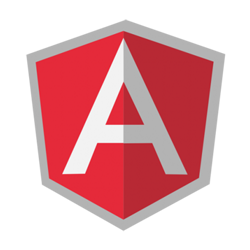 Learn how to use partial templates in your Angular single-page app.
Learn how to use partial templates in your Angular single-page app.
In the first article of this series: “Angular.js Basics: Routes Part I,” we learned how Angular can intercept a hyperlink click, and inject HTML into the DOM. Accomplishing this is surprisingly straightforward because Angular provides a great deal of abstraction with regard to preventing a full-page refresh, DOM manipulation, and deep-linking via the hash.
In that previous post, the HTML that we injected into the DOM was a string that was assigned to the “template” property of the object passed to the $routeProvider.when() method. While this makes it easy to accomplish our task, it is not optimal because we are mixing with JavaScript. Also, a real-world scenario might require markup significantly more robust than the simple one-line string we use (i.e. <h1>{{message}}</h1>). What we need is the ability to leverage HTML that is separate from our JavaScript code, and could be hundreds, even thousands of lines of markup. Most importantly, our JS controller should have no concern for the markup we use; its only job is to be told where it is, and then inject it into the DOM.
An Angular partial is simply an HTML file. The main difference between this and a full-fledged web page is that the partial contains only the HTML we need. There is no need for a !DOCTYPE declaration, HTML, HEAD or BODY elements. The HTML in this file will be injected into the current web page, so only the markup that makes-up the actual component is needed.
Note: The example code that follows leverages code from Part I of this series: “Angular.js Basics: Routes Part I”. For the sake of brevity, I won’t review much of what we learned in the previous article in great detail. If you are completely new to the idea of Angular Routes, I highly recommend you read that article first, and then return here.
Example # 1
|
1 2 |
<h1>The Message is:</h1> <p>{{message}}</p> |
In Example # 1, we have the entire contents of the file message.html. This file sits in the same folder as our web page. As you can see, it contains only two lines of HTML: an H1 tag and a paragraph tag. There is also a set of double-curly-braces in the paragraph tag. As per our discussion in the last article, this is a placeholder for the “message” property of the $scope object to which this element is bound.
Example # 2
|
1 2 3 4 5 6 7 |
//when the user clicks <a href="#hello">Hello</a> .when('/hello', { templateUrl: 'message.html', controller: function ($scope) { $scope.message = 'Hello!'; } }) |
In Example # 2, we have our call to the $routeProvider.when() method. As per the previous article’s discussion, this method takes two arguments: the path that we want Angular to respond to, and an object that tells Angular how to handle this request.
The code in Example # 2 is virtually identical from that of the previous article with one exception: Instead of using a “template” property, we are now using a property named “templateUrl”. What this tells Angular is:
When the user requests “/hello”, do not actually direct the browser to that path.
Load the file “message.html” via ajax, and inject it into the DOM
In “message.html”, replace {{message}} with the value of $scope.message
While all of this occurs in virtually milliseconds, it is important to note that these steps are, in fact, executed by Angular.
Example # 3
|
1 2 3 4 5 6 7 |
//when the user clicks <a href="#goodbye">Goodbye</a> .when('/goodbye', { templateUrl: 'message.html', controller: function ($scope) { $scope.message = 'GoodBye!'; } }) |
In Example # 3, we have made the same change to the $routeProvider.when() method call for the path “/goodbye”.
Example # 4
HERE IS THE LINK FOR FULL WORKING EXAMPLE: http://examples.kevinchisholm.com/javascript/angular/routes/part-2.html
How to Demo: In the blue box, you’ll notice two hyperlinks: “Hello” and “Goodbye”. Click either one of those links. When you click either link, you’ll notice that the appropriate HTML is injected into the DOM on the right side of the page. Note as well that in your browser’s address bar, “#hello” and “#goodbye” are appended to the URL. This is Angular’s way of providing support for deep-linking. The web page you are on never refreshes, but the hash portion of the URL changes.
The main difference between this example and the same one from Part 1 of our series is our use of partials. Instead of hard-coding an HTML string in our JavaScript controller by assigning it to the ‘template” property, we specify a “templateUrl” property and assign a value that points to an HTML file containing only the markup we need.
Summary
In this article, we learned how to leverage Angular partials. Instead of hard-coding some HTML in our JavaScript file, we tell Angular where to find an HTML file that contains the markup we need. The main advantage here is the ability to decouple our JavaScript from the presentation code. And the HTML files that comprise our partials can be as large or complex as we like.
Helpful Links for Angular Partials
http://docs.angularjs.org/tutorial/step_07
http://onehungrymind.com/building-a-website-with-angularjs-routes-and-partials/

[…] Part II of this series: “Angular.js Basics: Routes Part II: Partials“, we learned how to leverage partials in order to decouple our HTML from the associated […]
[…] The example code that follows leverages code from Part II of this series: “Angular.js Basics: Routes Part II: Partials“. For the sake of brevity, I won’t review much of what we learned in the previous article […]